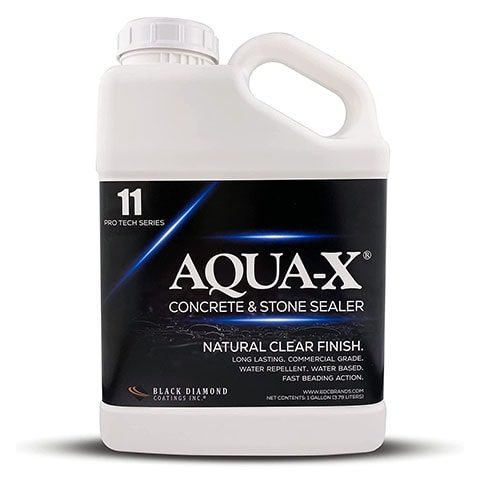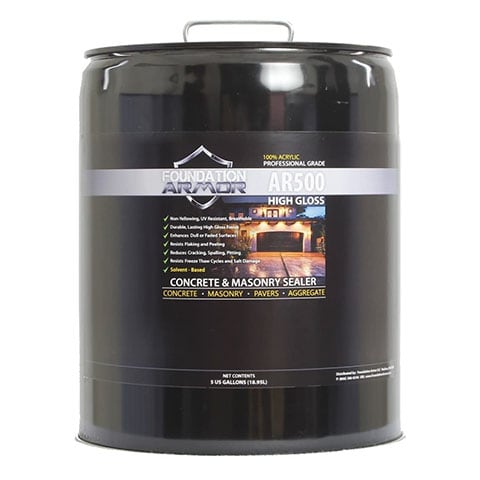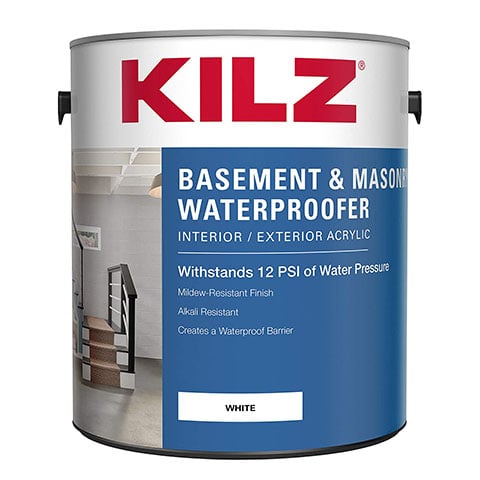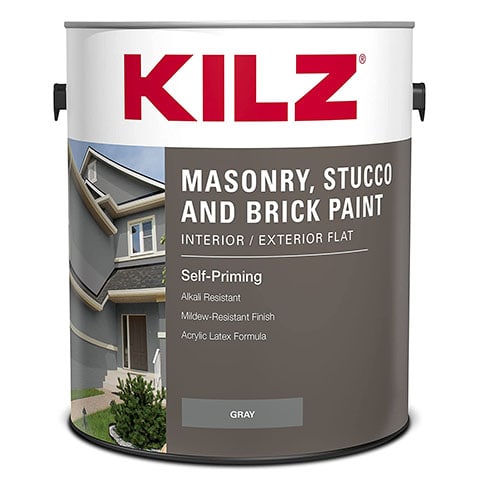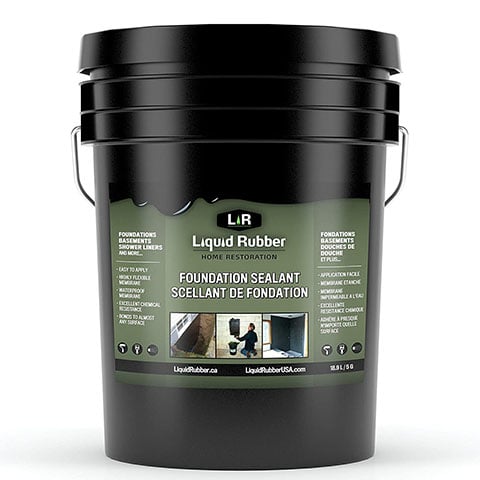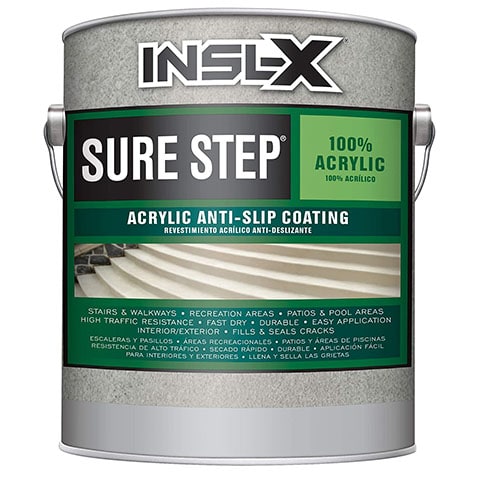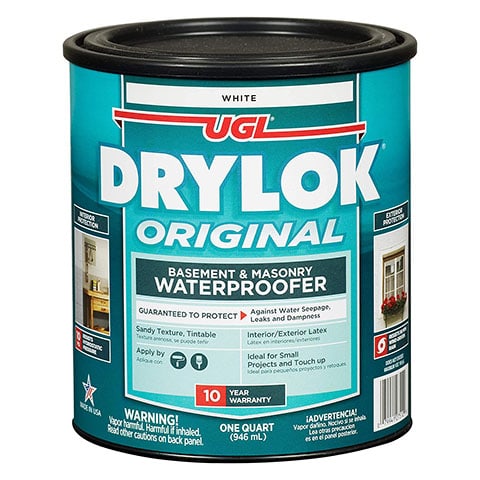8 Best Paints for Basement Walls in 2025: Reviews & Top Picks
-

- Last updated:
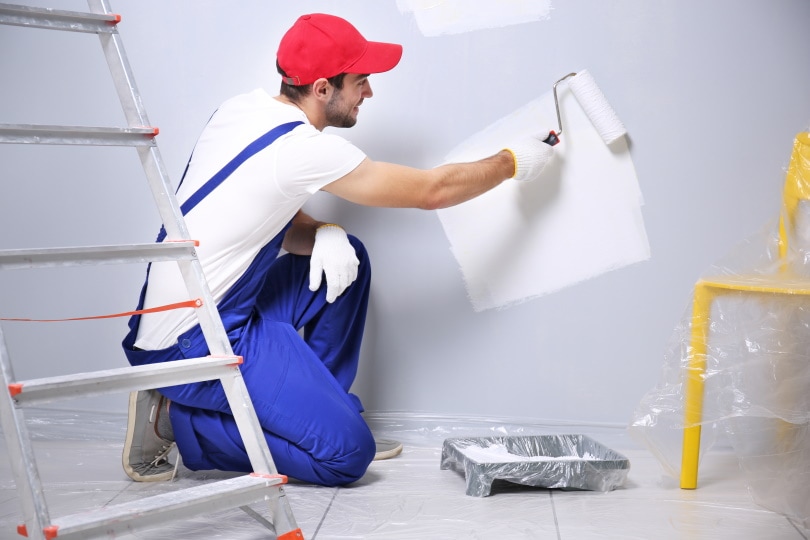

If you plan on overhauling the basement, you’re probably thinking about painting/waterproofing the walls first. It is one of the cheapest yet most effective ways of sealing the cracks and making the basement look brand-new. However, you need to know what to look for in paint. We’re talking about capacity, resistance, and compatibility, and you’ll learn your way around that in the Buyer’s Guide.
But first, we want to introduce you to the eight best paints for basement walls. During our in-depth reviews, these brands have proven reliable and long-lasting. They easily withstand the effects of Mother Nature (mainly humidity) and do a great job of hiding imperfections.
So, if it’s finally time to refresh the basement and you’re looking for the right paint, we’re confident you’ll find the perfect pick for your basement right there!

A Quick Comparison of Our Favorites of 2025
| Rating | Image | Product | Details | |
|---|---|---|---|---|
Best Overall

|
 |
Rust Bullet DuraGrade Concrete Coating |
|
CHECK PRICE |
Best Value

|
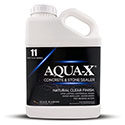
|
AQUA-X 11 Clear Penetrating Stone |
|
CHECK PRICE |
Premium Choice

|
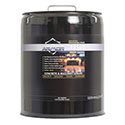
|
Armor AR500 High Gloss Solvent Based |
|
CHECK PRICE |
|
|
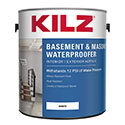
|
KILZ Basement and Masonry Waterproofing Paint |
|
CHECK PRICE |
|
|
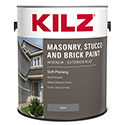
|
KILZ Interior/Exterior Self-Priming Masonry |
|
CHECK PRICE |
The 8 Best Paints for Basement Walls
1. Rust Bullet DuraGrade Concrete High-Performance Concrete Coating – Best Overall
| Volume: | 1 Gallon |
| Finish type: | Gloss |
| Compatibility: | Concrete |
What are you looking for in paint/coating for your basement? Most likely, you’re in the market for a product that easily “sticks” to concrete and handles humidity and UV rays. Well, that’s precisely what you’ll get with DuraGrade by Rust Bullet. On top of having impressive adhesive capabilities, it’s also practically immune to scratching and chipping. And you won’t have to spend hours preparing the walls for the paint.
DuraGrade doesn’t require a base coat, topcoat, or primer—you can skip all those steps. As a bonus, buyers get to choose between 20 vibrant colors, including blue, green, red, white, and black, to name a few, and that’s what makes it the best overall paint for basement walls. We must warn you, though, that it has a strong smell. Thankfully, it goes away quickly after you open the lid.
- Outstanding adhesion to concrete
- Highly resistant to natural elements
- Available in 20 different colors
- Minimal prep work required
- Has a strong odor
2. AQUA-X 11 Clear Penetrating Stone and Concrete Sealer – Best Value
| Volume: | 1 Gallon |
| Finish type: | Natural |
| Compatibility: | Concrete, stone |
If your budget for the basement walls is limited, but you still won’t settle for average-quality paint, pay attention to what AQUA-X has to offer. The Clear Penetrating Stone and Concrete Sealer is reasonably priced and takes 1–2 hours to dry. Another standout feature is that you won’t have to open every window and door or put on a mask when using this paint, as it is 100% safe for humans and pets. Plus, it’s odorless, which is also a pro if you can’t tolerate that distinctive paint smell.
The canister also deserves your attention, as it comes with a handle that makes it very easy to use. Plus, it has a lid/cap for storage. As for capacity, the sealer is available in 1- and 5-gallon bottles. However, while you can paint up to 800 square feet on stone surfaces (per gallon), concrete coverage isn’t quite as impressive (100–300 square feet). Still, for the money, AQUA-X 11 is the best paint for basement walls.
- Available at an affordable price
- Incredibly fast dry times
- Low VOCs and no odors
- Quick Start guide included
- Average coverage on concrete
3. Armor AR500 High Gloss Solvent Based Acrylic Concrete Sealer – Premium Choice
| Volume: | 5 Gallons |
| Finish type: | High-gloss |
| Compatibility: | Concrete, masonry, stone |
What makes a can of paint premium? And, more importantly, why should you pay extra for that? Well, let’s look at the facts. First, the AR500 high gloss sealer is made from non-recycled resin (US-based). Second, it’s breathable, quickly penetrates solids, and boasts enhanced bonding characteristics. If the walls in your basement are somewhat old and faded, AR500 will make them look good as new, which can’t be said about most paints.
While the price tag is a bit steep, Armor’s paint covers up to 2,000 square feet (it arrives in a 5-gallon container). Lastly, in contrast to most products that only last 3–4 years, Armor has an above-average lifespan of 5–7 years. Add fast, friendly, and helpful support agents, and you’ll see why we named this concrete/stone/masonry paint a premium choice!
- Formulated from non-recycled resins
- Makes faded concrete look brand-new
- Extended lifespan: up to 7 years
- Backed by helpful customer support
- A bit on the expensive side
4. KILZ Basement and Masonry Waterproofing Paint
| Volume: | 1 Gallon |
| Finish type: | Matte |
| Compatibility: | Concrete, masonry, wood, metal |
The first thing that will probably grab your attention when checking this paint out is its compatibility. You can apply it to concrete, metal, masonry, and even wood; the results are the same for each one. However, it’s not recommended to use on basement walls with active water leaks. Furthermore, you’ll have to spend quite some time mixing it to the desired consistency.
On the bright side, this KILZ waterproofing paint takes minimal effort to clean. All you’ll need for that is some water, a piece of cloth, and that’s it—no need for vinegar or any cleaning solutions. Also, this paint easily handles 12 PSI of hydrostatic pressure. So, if you live in a hot and humid area that floods a lot, keep that in mind. It can be applied to interior and exterior surfaces.
- Very easy to clean
- Works on various surfaces
- Withstands 12 PSI of water pressure
- Takes a while to mix
- Weak against active leaks
5. KILZ Interior/Exterior Self-Priming Masonry, Stucco and Brick Flat Paint
| Volume: | 1 Gallon |
| Finish type: | Natural, flat |
| Compatibility: | Masonry, brick, stucco |
Here, we have another decent-quality option from KILZ—one of the biggest “players” on the market. The capacity is the same, but the finish type is flat instead of matte. Unfortunately, it’s better suited for bricks and stucco. It could be ideal if you’re looking for self-priming paint that gives the walls a refined, refreshed look. For most surfaces, you only need a single coat.
Since it’s designed and formulated with walls in mind (it also works on floors and ceilings), a couple of gallons of this product can cover the entire basement. It’s very thin compared to its competitors, has low viscosity, and is challenging to spread. You’ll have to constantly dip the roller into the bucket, which can become tiresome.
- Gives a clean, refreshed look
- Looks great with a single coat
- Specifically mixed for walls
- Thin (low viscosity)
- Hard to spread
6. L R Liquid Rubber Concrete Foundation and Basement Sealant
| Volume: | 5 Gallons |
| Finish type: | Natural, flat |
| Compatibility: | Concrete, metal, wood |
The problem with many all-purpose paints is that they don’t always stick properly. However, that won’t be an issue with the Liquid Rubber sealant. As the manufacturer puts it, the final membrane has 900%+ elongation, which minimizes the chance of cracks ruining the walls. This water-based, non-flammable product can be used freely around family and pets.
It’s also environmentally friendly and has no solvents or nasty smells. On the downside, it’s difficult to remove if you get a drip or two on your clothes. So, wear protective gloves and an old outfit. Another con has to do with quality control. Many buyers report faulty packaging, dented containers, and even leakage.
- Water-based, non-flammable
- Protected against adhesion failure
- An eco-friendly product
- Minor QC issues
- Hard to clean
7. INSL-X SU092209A-01 Sure Step Acrylic Anti-Slip Coating Paint
| Volume: | 1 Gallon |
| Finish type: | Matte |
| Compatibility: | Concrete, metal, wood |
If you don’t have a stick to stir the paint or a tool for opening cans, INSL-X could be a worthy pick since it comes in a generous package. It boasts above-average color retention, too, along with abrasion resistance. This anti-slip paint works for floors and walls and provides a matte finish that looks lovely on most basements. Unfortunately, its curing time leaves a lot to be desired. While most paints on the list are dry to the touch in 2–5 hours, INSL-X takes up to a day to cure.
This is a significant downside for people in a hurry to get the job done. Surface coverage isn’t particularly impressive, either: you can only paint 80–120 square feet with one gallon versus the market average of 100–400 square feet. To compensate for that, INSL-X is available in seven colors. They’re all toxic to foliage, however.
- Excellent color retention
- Stir stick and can opener included
- Only covers 80–120 sq. ft.
- Takes 24 hours to cure
- Toxic for foliage
8. Drylok 27512 Latex Water Proofer
| Volume: | 1 Quart (0.25 Gallon) |
| Finish type: | Gloss |
| Compatibility: | Concrete, masonry |
This is one of the smallest cans of paint out there. So, if you plan on treating all four walls on an average-size basement, you’ll need several Drylok canisters. You must also pay a pretty penny for that since it isn’t very cheap. However, there won’t be much waiting for the product to dry, as it only takes 3 hours to dry for a new coat.
Sadly, the texture is a bit too grainy for basement walls. Returning to the pros, Drylock backs its paint with a generous 10-year warranty. Don’t hesitate to take advantage of it.
- Dries in 2–3 hours
- 10-year warranty
- Grainy texture
- Delivery takes time
- Overpriced for the can size

Buyer’s Guide: Selecting The Best Paint for Basement Walls
What’s the Average Canister Size/Capacity for Wall Paint?
Most basements in the US are 500–1,500 square feet in size and 8 feet high. However, it’s not rare for homes to have basements that reach 2,000 or even 3,000 square feet. More importantly, when trying to figure out how much paint you need for this project, you should measure the walls, not the whole basement (unless you want to paint the ceiling and the floor).
Measure each wall’s length and width, multiply those two numbers, and you’ll get the square feet. But wait—how many square feet will one canister of paint cover? One gallon can successfully cover up to 400 feet. That means 2–3 cans will be enough to paint the entire basement.
Why Is Weather Resistance So Important?
When we’re talking about protection against natural elements, we mostly mean resistance to humidity. Abnormal levels of moisture can make even the sturdiest concrete crack. Besides, when there are cracks and it rains, it can lead to a flooded basement. That’s why it’s vital to weatherproof the entire perimeter; it’s the most effective remedy against potential floods.
Surface Compatibility: Learning to Pick the Right Paint
While many “universal” products are on the market, it would still be best to find a can of paint specifically made with your walls’ material in mind. Now, most basements are built from concrete, and it shouldn’t be hard to find paint. The same is true for stone.
However, if it’s metal or wood, you might have to spend a bit more time since products that come with a “for basement walls” tag don’t always stick well to the surface. If you’re not 100% sure whether a particular brand has the right kind of protection for you, don’t hesitate to get in contact with customer support. You can also check the description on the official website, which should have all the necessary info.
How Much for Decent-Quality Basement Wall Paint?
Don’t worry; you won’t have to spend a fortune on paint for your basement. In the US, one gallon of wall paint is available for $20–$80. Yes, the price range is wide, but that’s because there are many factors to consider. First, the bigger the canister, the more you’ll have to pay. The brand also has a significant impact on the price.
Longevity, durability, and chemical composition shape the cost as well. It will come at a slightly higher price if it’s a US-made product. As for premium-quality paint, it can be as expensive as $100–150 for a gallon. That’s steep but well worth it if you want maximum protection for the basement. The good news is that most paint cans offer discounts if you purchase 5 gallons.
How Long Does It Take to Dry?
Like any other sealing/waterproofing product, basement wall paint takes 2–8 hours to dry. If it’s really hot outside, you can touch the walls in 4–5 hours. In contrast, a cold and humid climate makes it harder for the paint to dry. Still, no matter how bad the weather is or how cheap the product is, it will dry in less than 24 hours. If it’s latex paint, it will be ready for a second coat in 1–2 hours or even sooner.
What’s the Average Lifespan?
It greatly depends on the area you live in and the quality of the paint. If your house is located somewhere in the South, in a city/town prone to flooding, that will have a huge negative effect on the lifespan of your sealant product. Earthquakes are an even bigger threat, while tornadoes don’t do much in that regard. Above-average humidity levels and seismic activity makes a weatherproofing product crack and lose its properties.
So, how long can you expect decent-quality basement wall paint to last? In a perfect scenario, it will last for 8–10 years. However, experts in the field recommend resealing basement walls and floors every 2–4 years or at least checking on them to ensure they don’t chip or fade. Apply 2–3 coats to each surface to make the paint last longer.
What About the Floor and the Ceiling?
Yes, the “top” and the “bottom” will significantly benefit from renewing the paint/sealant. This is especially true for the floor. So, if you’re ready to pay a bit extra to have the basement properly sealed and ready for a flood, it would be best to paint the floor and ceiling. Remember that these surfaces are a bit more challenging to cover. With the floor, you must always be careful not to step into already-painted spots.
As for the ceiling, it’s harder to use a brush when standing on a chair/table/ladder and constantly looking up and watching out for dripping paint. Start with the walls, see how much money you spend and the effort you put into that, and decide whether you want to get some more work done. And one more thing; the paint on the ceiling lasts the longest. The floor, in contrast, is under constant “abuse” and requires refreshing the paint/sealant more often.

Conclusion
We hope you enjoyed our detailed reviews! If you want the finest paint for your basement, we recommend Rust Bullet. It is element-resistant, sticks easily, and doesn’t require any prep work. If you’re unsure your budget can Rust Bullet, you can try the AQUA-X product instead. It is very cheap, dries swiftly, has no odors, and does a decent job of sealing interior and exterior surfaces.
As for our premium choice, Armor AR500 has an extended lifespan, strong support, and looks excellent on basement walls. Take your pick!
Featured Image Credit: Africa Studio, Shutterstock
Contents

